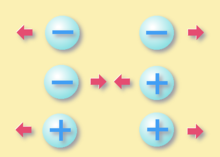 The planimetry is that Topography branch that takes care of the representation of the earth's surface on a plane. Thus, it focuses its study on the set of methods and procedures that will tend to achieve a scale representation of all those interesting details of the terrain in question on a flat surface, except for its relief and represented in a horizontal projection.
The planimetry is that Topography branch that takes care of the representation of the earth's surface on a plane. Thus, it focuses its study on the set of methods and procedures that will tend to achieve a scale representation of all those interesting details of the terrain in question on a flat surface, except for its relief and represented in a horizontal projection.
Then, the planimetry, projects on the horizontal plane the elements of the traverse such as points, straight lines, diagonals, curves, surfaces, contours, bodies, etc., without considering the elevation difference.
Meanwhile, horizontal distance measurements can be determined from various instruments and procedures and their choice will depend exclusively on the objectives pursued, the lengths to be measured, the terrain conditions and the instruments available. .
Mostly, horizontal distances will be determined by references (when the planes are available, the coordinates can be read directly using coordinate systems), steps (the distance in question will be known through the normal steps that a person takes and the number of them when a certain distance is covered), by tape measure (we will need additional elements such as stakes, plumb bobs, rods and spirit levels), by tachymeter, among other methods.
And on his side the anatomical planimetry is a method widely used in Anatomy which serves to study the human body from imaginary lines that begin in certain anatomical structures and that precisely have the objective of dividing the human being into planes to locate certain structures, or failing that, some pathologies.
The fundamental plans in this sense are: median or midsagittal plane (It is the vertical plane that runs longitudinally throughout the body and divides it into two equal parts), paramedian or parasigatal planes (any of the vertical planes that are parallel to the median plane and that divide the body into two unequal zones), frontal or coronal planes (any vertical plane that is perpendicular to the median plane and that divides the body into an anterior and a posterior zone), horizontal planes (Any of the planes perpendicular to the median and coronal planes and that divide the body into two zones, one cranial or superior and another caudal or inferior) and transverse planes (It will be that plane perpendicular to the major longitudinal axis).









